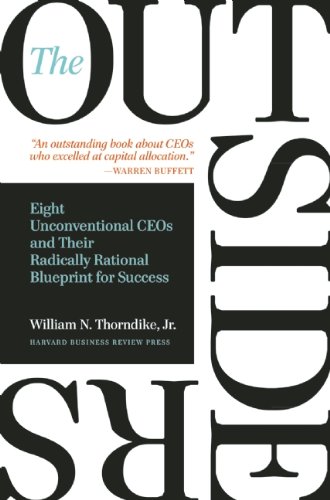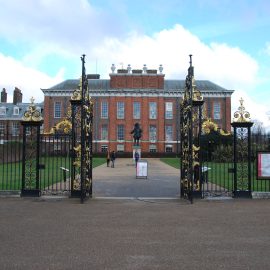

This article is an excerpt from the Shortform summary of "The Outsiders" by William N. Thorndike, Jr. Shortform has the world's best summaries of books you should be reading.
Like this article? Sign up for a free trial here .
What was Ralston Purina company, and what made the company so successful leading up to the 2001 Nestle merger?
Ralston Purina and its most successful CEO, Bill Stiritz, stuck to unconventional but effective methods of financial management and acquisitions. Ralston Purina was known for it’s analytical, data-driven approach and a strict policy to follow the numbers. This unconventional method clearly led to a big payoff.
What Was Ralston Purina?
Ralston Purina was a consumer packaged goods company producing commercial animal feed, consumer pet food, and human foods. When Stiritz joined as CEO in 1981, Ralston had a muddled focus (having purchased a hockey team and ski resort) and a stagnant stock price. Stiritz revitalized Ralson Purina with discipline, divesting unprofitable business units and acquiring new genuinely synergistic businesses. In 2001, Ralston merged with Nestle in a transaction worth $10.4 billion.
Ralston Purina Company History
In the 20th century, consumer packaged goods companies like Heinz and Kellogg largely moved together as a pack. They were considered stable blue-chip stocks, paying out dividends and resisting recessions. During the 1960s and 1970s, they acquired aggressively in pursuit of synergy and vertical integration, ending up in industries like restaurants and agriculture.
Ralston Purina had done the same. With its core in agricultural feed, it had ended up with broad interests in a fast food chain (Jack in the Box), crop farms, a hockey team (the St. Louis Blues), and a ski resort. In 1980, when CEO Hal Dean stepped down, its stock price was the same as a decade prior.
During the board’s search for CEO, an internal executive Bill Stiritz submitted an unsolicited plan for revitalizing the company—sell businesses that were performing poorly, and reorganize the company around its high-margin consumer brands. The board director read the plan and knew it was the right direction. Stiritz got the job.
Stiritz had spent his early career at Pillsbury as a field rep and at an advertising agency. This would provide on-the-ground experience in both distribution and marketing. In 1964, at 30 years old, he joined Ralston Purina in the consumer products division (pet foods and cereals), considered one of the weakest divisions of Ralston Purina. He introduced still-famous brands Purina Puppy and Cat Chow, and, during his time in the division, its profits increased 50-fold.
Unlike other outsider CEOs, Stiritz had been an insider at Ralston Purina for over a decade. But he brought an unconventional plan that deviated from competitors. He knew that the consumer brands had attractive economics (high margins, low capital requirements), and focusing on this core would propel Ralston to new heights of profitability. When he became CEO in 1981, he implemented his plan decisively.
First, he sold the non-core businesses such as Jack in the Box, the hockey team, and the agricultural operations.
Then he made two large acquisitions—Continental Baking (including Twinkies and Wonder Bread) and Energizer Battery, totaling over $2.2 billion and 30% of Ralston’s market capitalization. Both businesses had languished under their previous owners, due to neglect or insufficient skillset. Ralston quickly improved its performance by improving marketing (launching the Energizer bunny campaign), improving distribution, launching new product lines, and reducing costs. Over their lifetime at the company, Energizer would generate 21% annualized returns, and Continental 13%.
Over the 1980s, he continued executing the plan, adding acquisitions that would strengthen the consumer brand core while divesting businesses that could not generate sufficient returns. Ralston Purina’s financial metrics improved considerably—return on equity increased from 15% to 37%, and pre-tax profit margins increased from 9% to 15%.
In the 1990s, he continued focusing Ralston Purina. He spun-off smaller brands like Chex cereals into a new company, Ralcorp, and he sold the last of the agricultural operations to DuPont.
His last two moves were defining moments:
- In 2000, he spun off Energizer Holdings, which then represented 15% of Ralston Purina’s enterprise value. This left Ralston with a sole focus on pet food.
- In 2001, he negotiated a sale of Ralston to Nestle for $10.4 billion, or 14-times cash flow.
With this done, Stiritz had turned around a stagnating company, made it the dominant player in consumer goods, and returned considerable value to shareholders.
Ralston Purina Performance
From 1981 to 2001, Ralston showed a 20.0% annual return rate, compared to 14.7% for the S&P 500 and 17.7% for peer companies.
$1 invested at the beginning would have been worth $38 by 2001. This outperformed the S&P by 2.5 times, and his peers by 50%.
The Ralston Purina Company merged with Nestle in 2001. Stiritz and Ralston Purina proved that CEOs and companies could be successful by looking beyond standard metrics, and thinking critically about what they wanted to achieve.

———End of Preview———
Like what you just read? Read the rest of the world's best summary of William N. Thorndike, Jr's "The Outsiders" at Shortform .
Here's what you'll find in our full The Outsiders summary :
- What great CEOs like Warren Buffett do that average CEOs don't
- How to master the art of capital allocation
- How to be a great manager that your team is excited to work with






